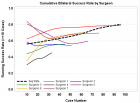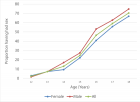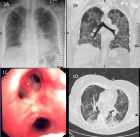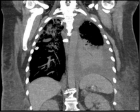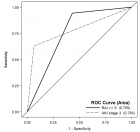Table of Contents
Proactive Psychiatric Consultation and Hospital Length of Stay in Adults: A Review of the Literature
Published on: 4th October, 2024
According to a 2022 systematic review on the prevalence of psychiatric disorders in general hospitals, it was estimated that approximately one-third of medical inpatients present with a coinciding psychiatric condition. However, other studies have reported that a low rate of patients actually obtain an inpatient psychiatric consult; and even fewer patients receive a consultation when it would not be traditionally indicated. Therefore, we have seen an emergence of the use of Proactive Consultation-Liaison (C-L) Psychiatry across many hospital settings. This model of care utilizes systematic screening for active mental health concerns, proactive interventions tailored to individual patients, team-based delivery, and care integration with primary services to provide psychiatric consultation earlier. This study conducted a focused PubMed search to review the research to date on proactive C-L psychiatry and its impact on hospital length of stay (LOS) in patients over 18 years old. Results show a consequential reduction in average hospital LOS when proactive C-L psychiatry services are used compared to reactive, on-request consultation services. A shortened LOS is seen with this practice when there is a quicker time for consultation or referral. Thus, there is evidence of proactive C-L psychiatry’s success in decreasing average hospital LOS and improving patient care. Additional studies are necessary to determine its significance, as little research to date has been completed on the topic. It is recommended to expand the scope of investigation to different patient populations, including but not limited to pediatrics and patients without an underlying mental health illness.
Parallelism of the Evolution of Social Insects and Humans: A Hypothesis
Published on: 26th August, 2024
Social insects have eradicated the instincts inherited from their solitary ancestors that were harmful to communities. The elimination of these instincts was accomplished by natural selection, the units of which were communities. Man has not yet eradicated the instincts inherited from their solitary animal ancestors that were harmful to communities. But their eradication is underway. And it is also being accomplished by natural selection, the units of which are societies. Completion of evolution in this direction will probably lead to the disappearance of human instincts harmful to society, as they have disappeared in social insects. This will happen after a period of time measured not by historical standards, but by geological.
Physicians’ Anxiety Post-COVID Pandemic: A Cross-Sectional Study
Published on: 27th June, 2024
The psychological burden of physicians has been the focus of many researchers since the 1950s, and some papers have found a high prevalence of anxiety and depressive disorders among medical staff. Recent studies have shown that the coronavirus pandemic didn’t go easy on healthcare workers. The fact that it has been three years since the outbreak, has motivated our study. Which aims to evaluate the intensity of anxiety among medical personnel and the risk factors that could be incriminated post-COVID pandemic and if the level of anxiety is back to normal. This is a cross-sectional study, carried out with a survey split into 2 parts sociodemographic and work-related data, and the French version of the Hamilton anxiety scale, Statistical analysis was performed using Jamovi et Microsoft Excel. About half of the 116 physicians in our study had no anxiety (55.2%), while 21.6% had mild anxiety, 10.3% had moderate anxiety, and 12.9% had severe anxiety. The identified risk factors for anxiety were female gender, personal and family history of anxiety disorder, doing night shifts, and being a general practitioner. The anxiety rate of physicians is back to normal post-COVID pandemic. But we shouldn’t stop there. The mental health status of medical personnel depends on several of the factors listed above. Determining them would imply a call for the implementation of preventive measures for anxiety and depressive disorders among physicians. Because taking care of physicians is taking care of patients.
Loneliness and Culture: A Commentary
Published on: 1st May, 2024
Loneliness is thean experience that is intertwined inwith being human, but since it is so painful and troubling, all of us try to avoid it. It has short- and long-term negative consequences, including its influence on our life satisfaction, health, and mortality. Various causal factors were explored regarding loneliness, which is essentially a subjective experience. This commentary aims to highlight the contribution of culture, be it collectivistic or individualistic, to the development of loneliness. Since loneliness is correlated with the expectation of being with others and part of a community, research found that people in collectivistic cultures are lonelier than those in individualistic ones. Ethnicity also contributes to the development, and was thus reviewed. While it beingis an essential part of being human, loneliness can, indeed, be attenuated and its pain lessened, and culture may predict ways of doing so.
Approaching Mental Health Through a Preventive Data Analysis Platform
Published on: 3rd April, 2024
The rising prevalence of chronic diseases and the aging population globally are diminishing the overall quality of life, especially for those with demanding daily routines. As medical advancements extend lifespans, the proportion of individuals over 60 is set to double by 2050, necessitating societal shifts toward health-responsible citizenship. Despite longer lifespans, evidence suggests that older age often accompanies mental health challenges such as anxiety, depression, and substance misuse. Social isolation and loneliness further compound these issues, affecting both physical and mental well-being. Digital wellness empowers individuals to take charge of their health, promoting proactive care and literacy to foster health-conscious citizenship. This paper explores the intersection of mental health, aging populations, preventive wellness initiatives, and health literacy, emphasizing their significance within the Health 5.0 framework, especially for older adults. Traditionally, health regulators offer static workflows for adopting standard procedures in health and well-being, reflecting a reactive approach. However, the evolving landscape of wearable and mobile devices connecting to healthcare IT systems through secure online networks necessitates a shift. Technology now facilitates remote patient monitoring and telemedicine service subscriptions and empowers individuals to manage their health proactively.The BE4YOU project, conducted in Portugal, serves as a case study, facilitating individual maintenance of health and well-being through intelligent and dynamic workflows, which are defined based on analytical models considering each person’s risk profile. By facilitating data sharing, promoting healthy lifestyles, and enabling early detection of mental health issues, the project leverages technology to support personalized monitoring and enhance overall health outcomes. Through technology-driven empowerment, individuals and healthcare professionals are better equipped to assess risks and ensure ongoing wellness monitoring, underscoring the role of technology in fostering personal health and supporting healthcare effectiveness.
Mapping the Psychosocial: Introducing a Standardised System to Improve Psychosocial Understanding within Mental Health
Published on: 9th February, 2024
Objective: Psychosocial approaches are increasingly being advocated as an efficacious means of addressing mental health problems. However, with a multitude of complex and varying interpretations present with the use of the term ‘psychosocial’ / ‘psycho-social’ in contemporary discussions of mental health, its application can be vague and even contradictory. This presents problems for research to inform practice and practice to inform research, ultimately inhibiting the help given to those suffering. Method: Literary review, reflecting an extended period of 10 years, explores and analyses the use of the terms ‘psychosocial’ and ‘psycho-social’ within a mental health context. Results: This article identifies that applications and use of the term psychosocial vary significantly, with two models being primarily evident in mental health applications: a multidisciplinary and interdisciplinary model. Conclusion: A standardised system is established for mental health theorists and practitioners to identify and categorise these different applications. This outcome is intended to lead to a better understanding of different psychosocial applications, provide better communication between existing psychosocial applications, and improve clarity for future instruction.
Schizoaffective Disorder in an Individual with Mowat-Wilson Syndrome (MWS)
Published on: 31st January, 2024
Mowat-Wilson Syndrome (MWS) is an autosomal dominant genetic syndrome caused by mutations in the ZEB2 gene. It is characterized by distinctive facial appearance, intellectual disability (ID), epilepsy, Hirschsprung disease (HSCR), and other congenital anomalies. The psychiatric symptoms, associated with MWS have rarely been reported. The following report highlights a case of schizoaffective disorder in a 24-year-old male with MWS and the challenges he encountered over his treatment course.After considering numerous diagnoses including bipolar disorder and psychosis secondary to a general medical condition, the patient was diagnosed with schizoaffective disorder. Various trials consisting of atypical antipsychotics and mood stabilizers were unsuccessful in managing his symptoms. Eventually, the patient stabilized on a medication regimen consisting of clozapine 300 mg once daily, topiramate 75 mg twice per day, and lithium 1800 mg once daily. This case report documents co-occurrence of MWS and Schizoaffective disorder.
Hospitalization, Surgery and loneliness
Published on: 3rd January, 2024
Being hospitalized or undergoing a surgical procedure may be quite an isolating and lonely experience. This review explored loneliness in the hospital and surgical setting, and highlights the emotional and psychological challenges experienced by patients during their healthcare journey. While hospitals traditionally provide medical and surgical care for a wide array of conditions, the irony lies in their potential to disrupt one’s daily routines, contribute to loss of control, prolong hospital stays, and limit connections with family and loved ones leading to negative psychological well-being and intensifying feelings of loneliness. The implications of loneliness in the hospital and surgical contexts are discussed along with recommendations for improving the healthcare system’s response to the negative health consequences associated with loneliness. Coping strategies are discussed, including social support mechanisms, and approaches to healthy behaviors, i.e. mindfulness, which contribute to mitigating loneliness, in the context of hospitalizations and surgery.

If you are already a member of our network and need to keep track of any developments regarding a question you have already submitted, click "take me to my Query."







